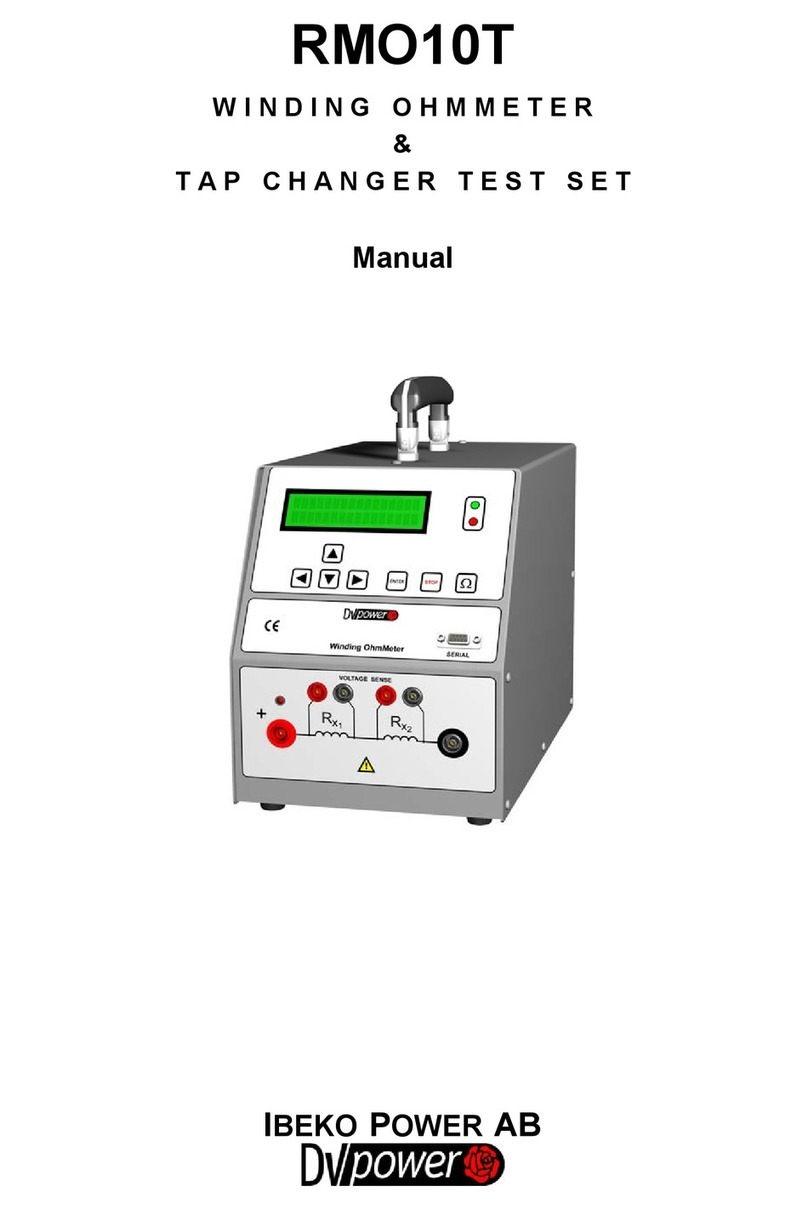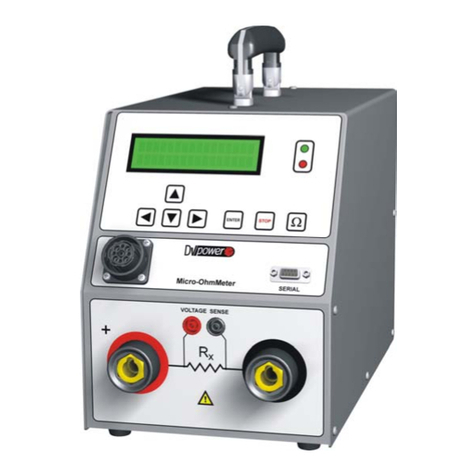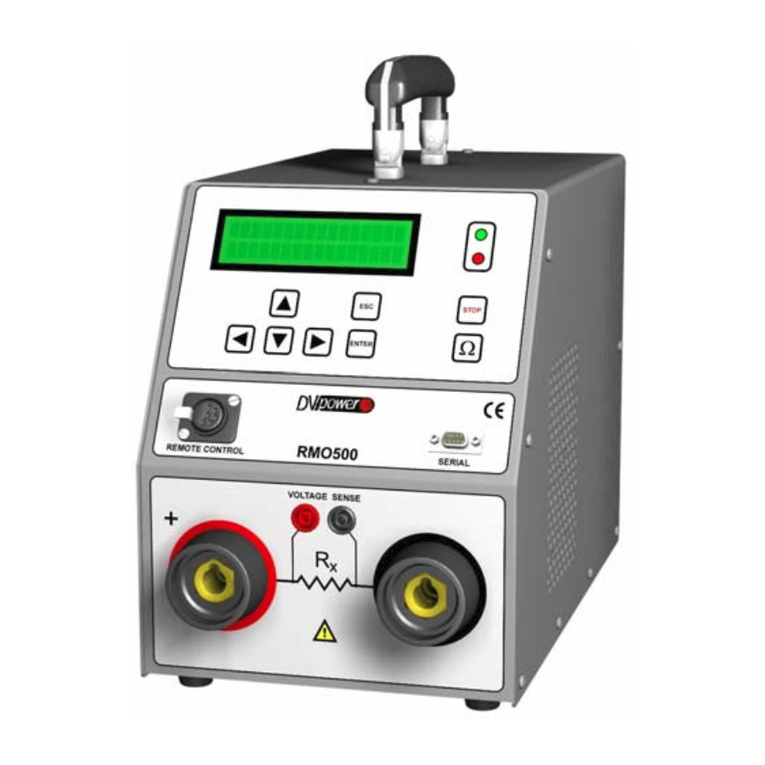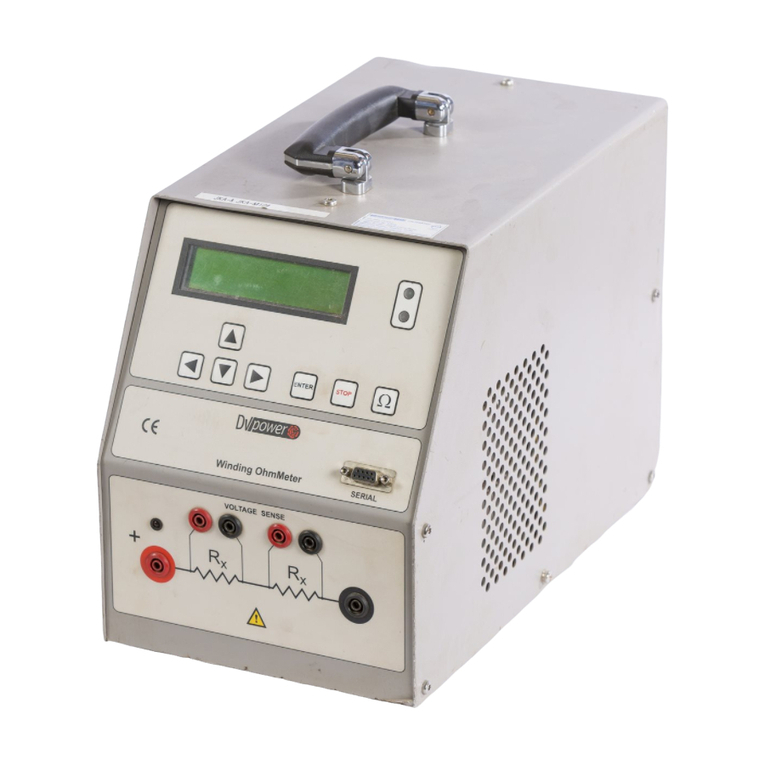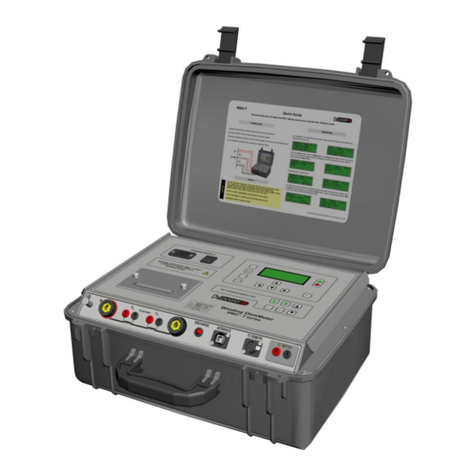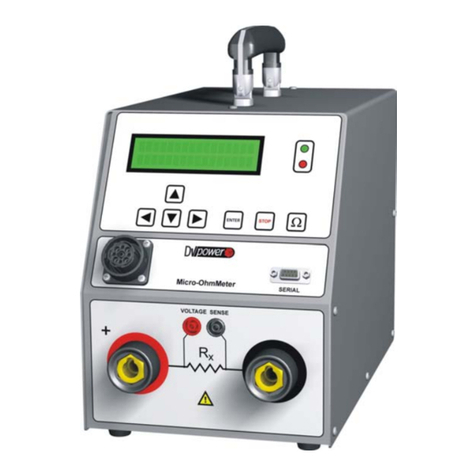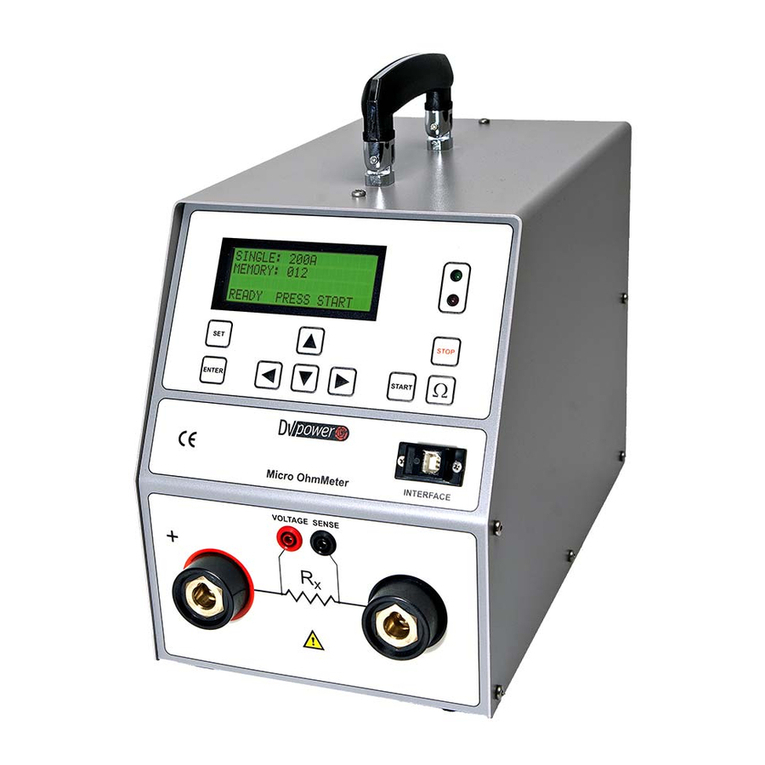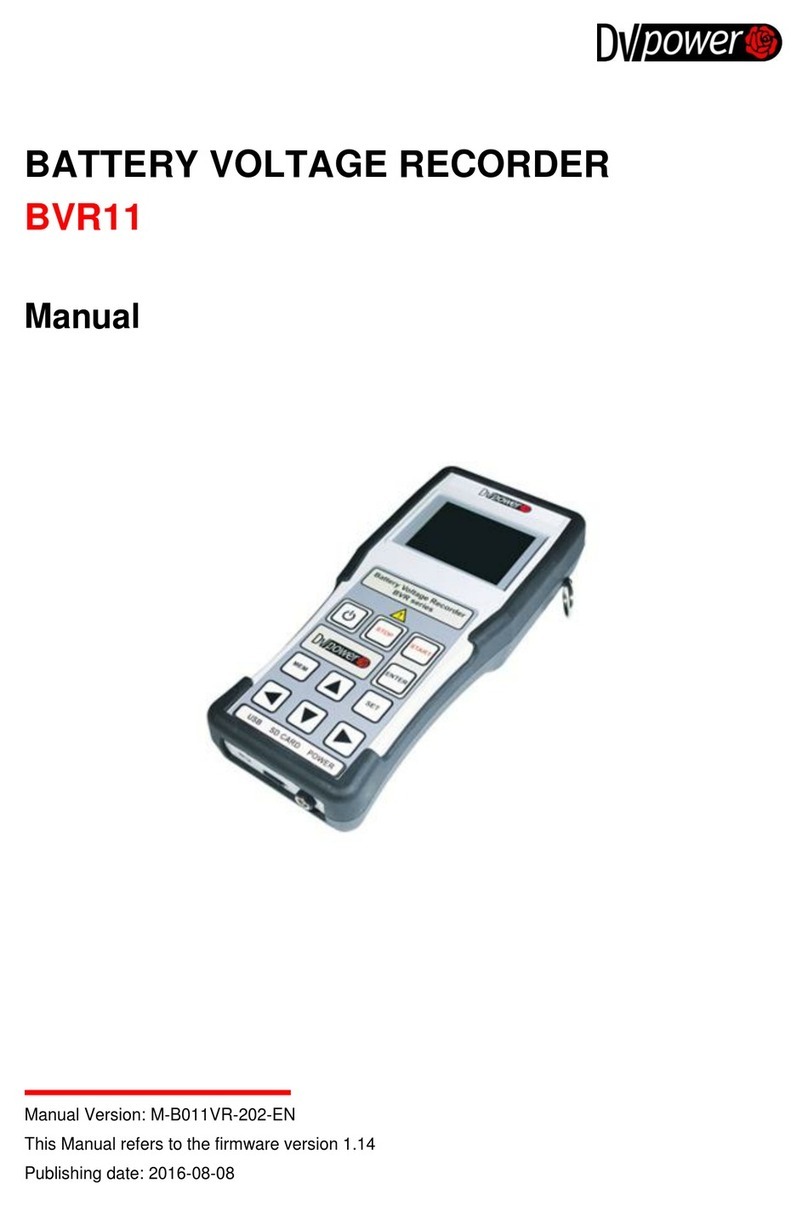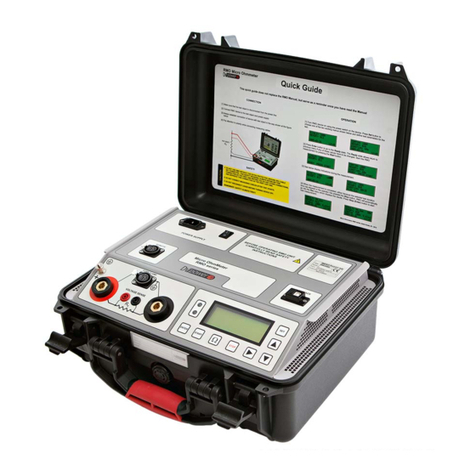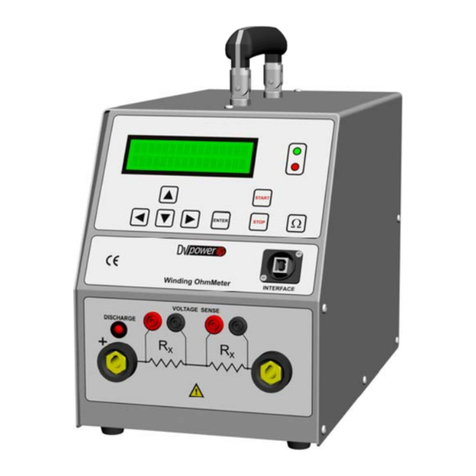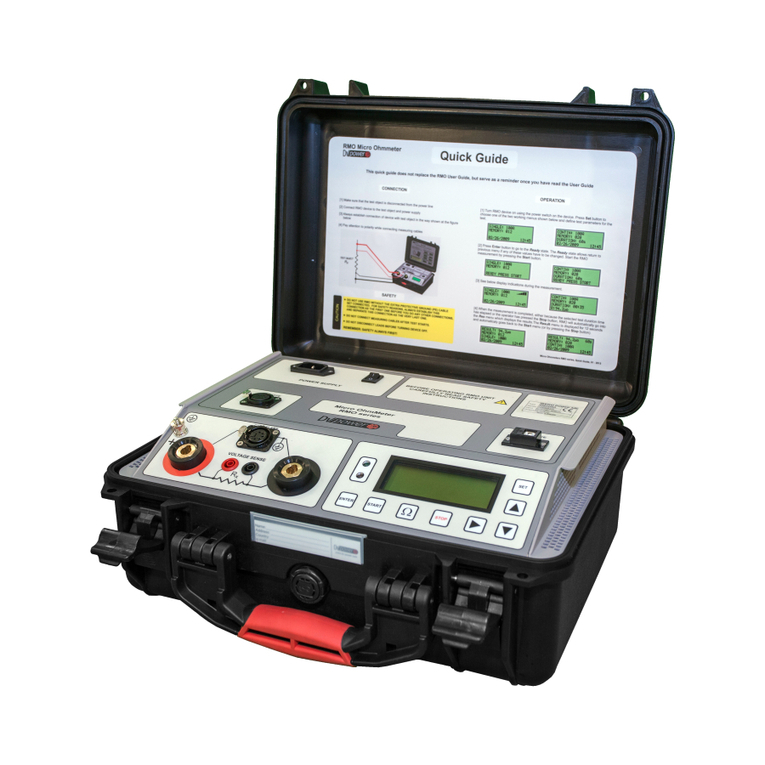
5
RMO60TD Designated Use, Functionality
Choose the test current so that the maximum value is obtained for the expected resistance (refer
to section 6.1).
The inductance value of a transformer depends on the current injected in the windings. When the
transformer is saturated the inductance is minimized. A transformer is normally designed to reach
saturation when the current is 1,2 times the peak value of the no-load current. The no-load current is
normally in the range of 0,2 % to 5 % of the nominal winding current.
When measuring the DC resistance, the test current should be at least 1,2 times the no-load current of
the transformer. This is to ensure that the transformer core is saturated. Note also that the test current is
NOT to exceed approximately 10 % to 15 % of the nominal winding current.
Note: The Voltage sense measuring channels are automatically selected connecting measuring cables
to those channels.
At the start of each test a check of cable continuity is done. In case of open circuit, an alarm is activated,
and the error message is shown on the display.
The test is started by pressing the START button. The RMO60TD injects current with a voltage as high
as 60 V. This ensures the test to be as short as possible and that the desired test current is reached
faster.
When the current is stabilized, RMO60TD measures the resistance of the test object. The test result is
displayed as R=U/I. During the testing period, a new result is shown on the display approximately each
second.
Tests could be finished or interrupted two ways:
- Pushing the STOP button,
- Automatically, after the selected time has expired.
In both cases, upon completion of the test, a measured value of the resistance is recorded to pre-
selected internal memory location.
Each time the Ωbutton is pushed, results of the resistance, the ripple and the test current value are
stored into the internal memory of RMO60TD, and memory location changes to the next one.
Minimum measurement time is 30 seconds.
By pushing the STOP button test could be completed at any time. When the STOP button is pushed, the
last measured result will remain saved in the internal memory.
After the selected test time has expired, the last result remains saved at selected memory location.
Note: Using DV-Win the results could be stored to a PC, where reading interval of results is adjustable.
Results will be shown in a table in Excel format with an option to perform additional edit and graphic
presentation.
Using DV-Win after the test in order to transfer the results from selected internal memory location to a
PC, will allow transfer of the last test result only.
When the measurement is complete, RMO60TD starts discharging the energy from the inductance.
During current discharging, the red discharge LED is lit and the buzzer is ON. Discharge is complete
when the discharge LED and the buzzer are OFF and when discharging message is disappeared from
the display.
Both, injection of current and discharging energy from the inductance is fully automatically regulated. An
intrinsically safe discharge circuit, with indicator, dissipates the stored magnetic energy rapidly after the
test. The discharging circuit is independent of power supply.
Cooling of RMO60TD is supported by a built-in fan that is automatically activated when the device is
turned on.
